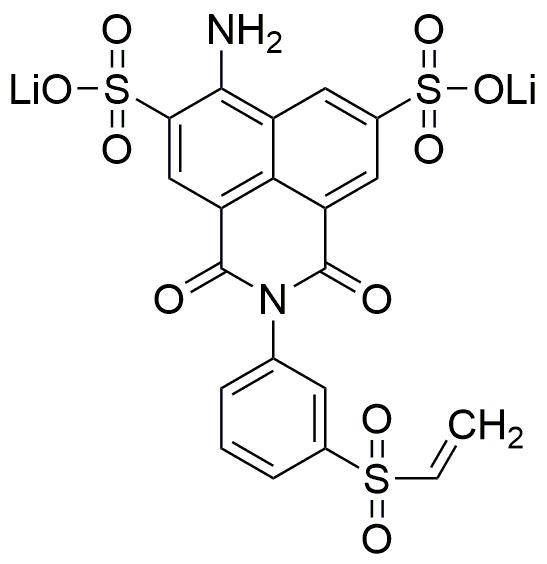Lucifer Yellow VS dilithium salt is widely utilized in research focused on:
- Fluorescent Tracing: This compound is commonly used in cellular biology to trace the pathways of neurons and other cells, allowing researchers to visualize cellular processes in real-time.
- Histological Studies: It serves as a vital tool in histology for staining tissues, helping to highlight specific structures and improve the clarity of microscopic images.
- Drug Delivery Systems: The compound can be incorporated into drug delivery systems, enhancing the targeting and efficacy of therapeutic agents in specific tissues.
- Immunofluorescence: It is employed in immunofluorescence assays to detect specific proteins in cells, aiding in the understanding of various diseases and biological functions.
- Environmental Monitoring: Researchers use it to track pollutants and study their effects on aquatic ecosystems, providing insights into environmental health and safety.
General Information
Properties
Safety and Regulations
Applications
Lucifer Yellow VS dilithium salt is widely utilized in research focused on:
- Fluorescent Tracing: This compound is commonly used in cellular biology to trace the pathways of neurons and other cells, allowing researchers to visualize cellular processes in real-time.
- Histological Studies: It serves as a vital tool in histology for staining tissues, helping to highlight specific structures and improve the clarity of microscopic images.
- Drug Delivery Systems: The compound can be incorporated into drug delivery systems, enhancing the targeting and efficacy of therapeutic agents in specific tissues.
- Immunofluorescence: It is employed in immunofluorescence assays to detect specific proteins in cells, aiding in the understanding of various diseases and biological functions.
- Environmental Monitoring: Researchers use it to track pollutants and study their effects on aquatic ecosystems, providing insights into environmental health and safety.
Documents
Safety Data Sheets (SDS)
The SDS provides comprehensive safety information on handling, storage, and disposal of the product.
Product Specification (PS)
The PS provides a comprehensive breakdown of the product’s properties, including chemical composition, physical state, purity, and storage requirements. It also details acceptable quality ranges and the product's intended applications.
Certificates of Analysis (COA)
Search for Certificates of Analysis (COA) by entering the products Lot Number. Lot and Batch Numbers can be found on a product’s label following the words ‘Lot’ or ‘Batch’.
*Catalog Number
*Lot Number
Certificates Of Origin (COO)
This COO confirms the country where the product was manufactured, and also details the materials and components used in it and whether it is derived from natural, synthetic, or other specific sources. This certificate may be required for customs, trade, and regulatory compliance.
*Catalog Number
*Lot Number
Safety Data Sheets (SDS)
The SDS provides comprehensive safety information on handling, storage, and disposal of the product.
DownloadProduct Specification (PS)
The PS provides a comprehensive breakdown of the product’s properties, including chemical composition, physical state, purity, and storage requirements. It also details acceptable quality ranges and the product's intended applications.
DownloadCertificates of Analysis (COA)
Search for Certificates of Analysis (COA) by entering the products Lot Number. Lot and Batch Numbers can be found on a product’s label following the words ‘Lot’ or ‘Batch’.
*Catalog Number
*Lot Number
Certificates Of Origin (COO)
This COO confirms the country where the product was manufactured, and also details the materials and components used in it and whether it is derived from natural, synthetic, or other specific sources. This certificate may be required for customs, trade, and regulatory compliance.


